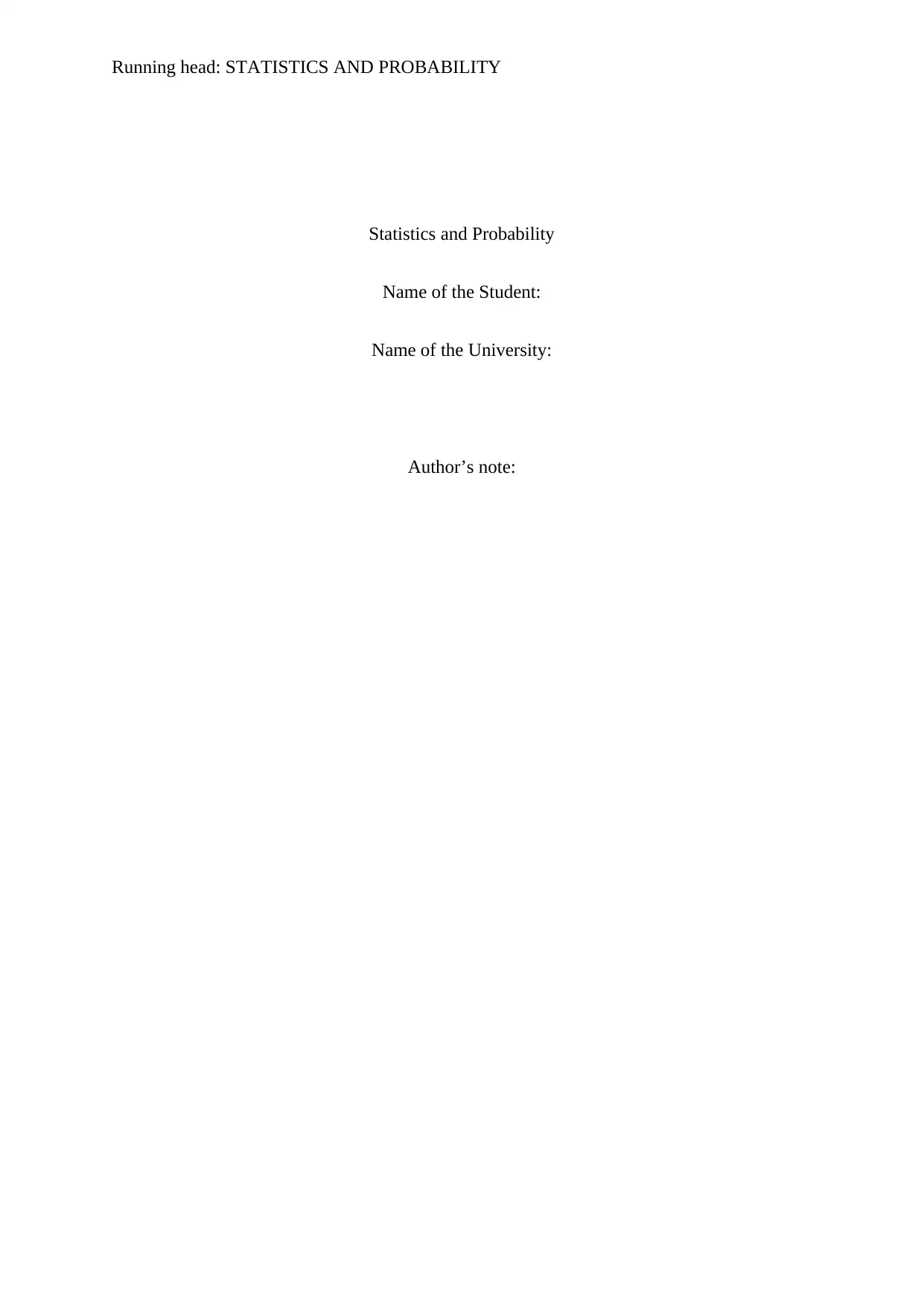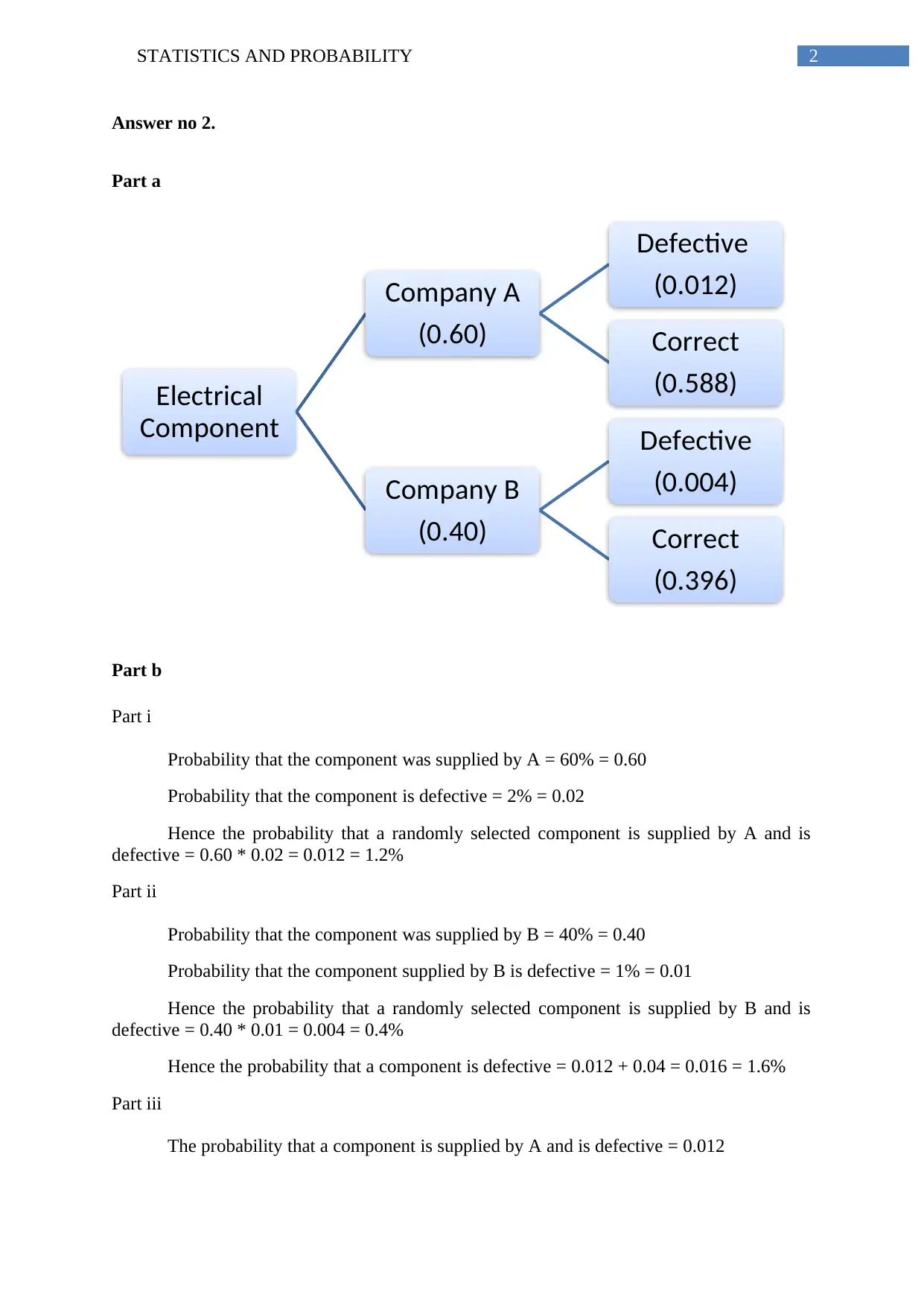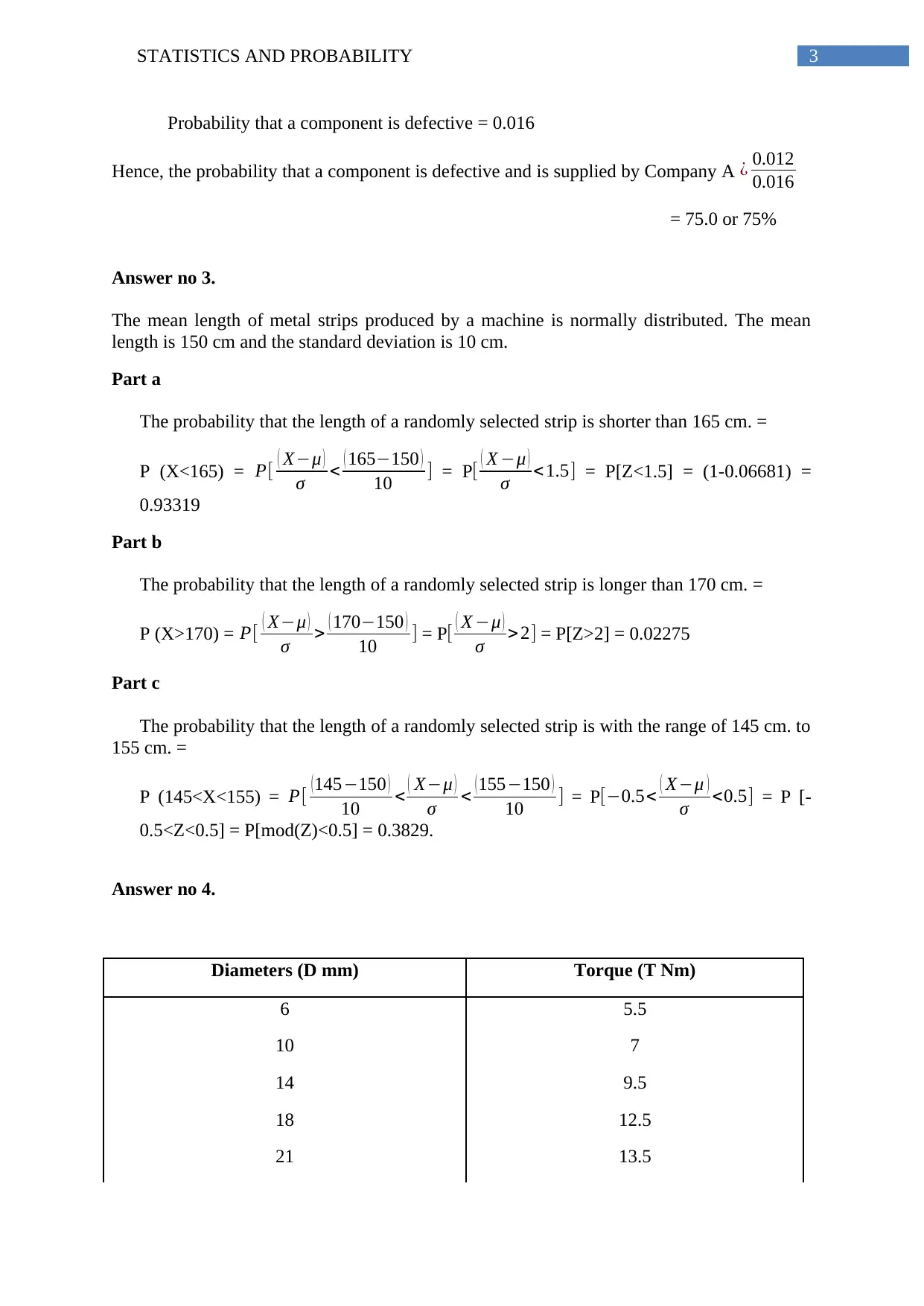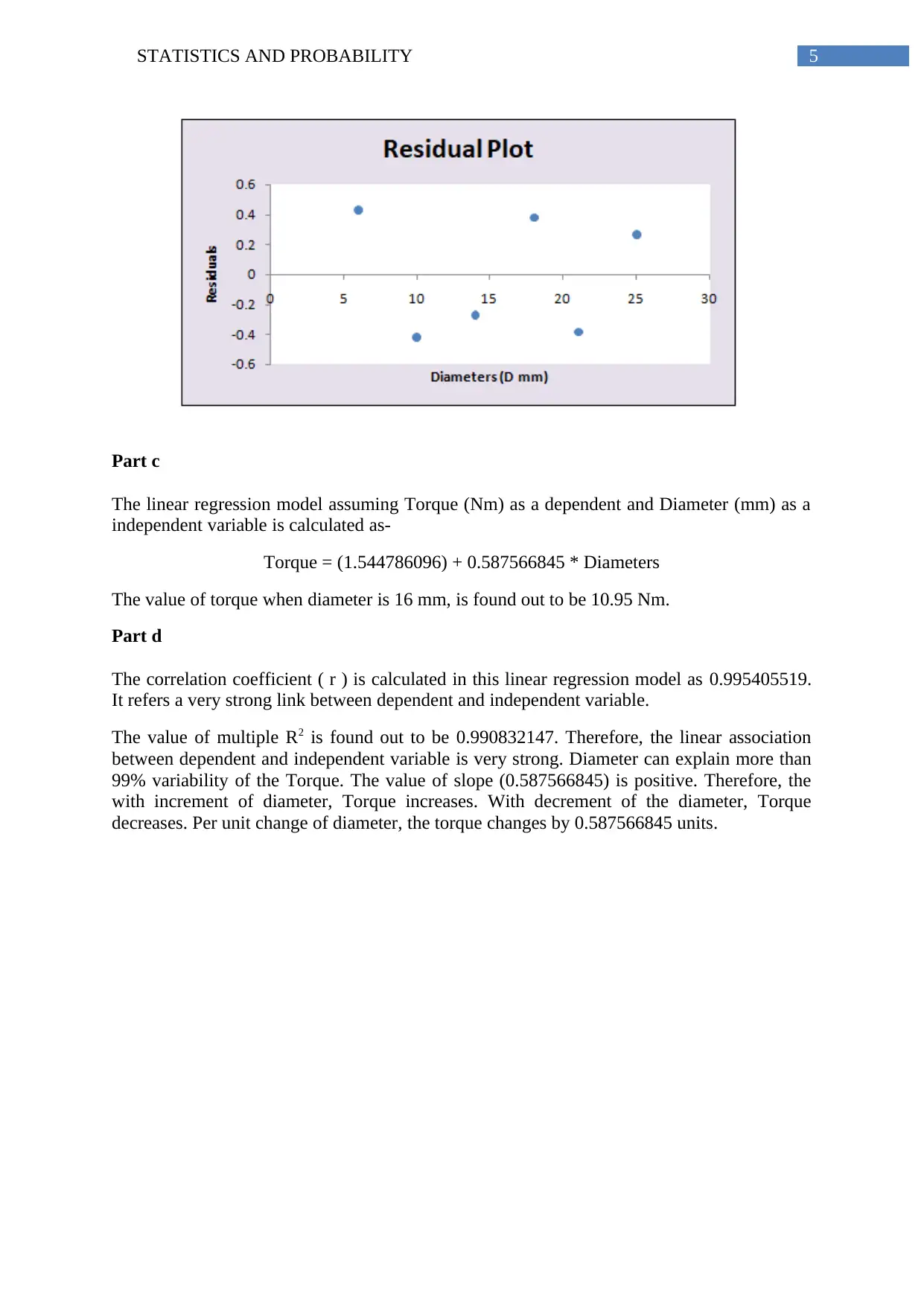Statistics and Probability - AME Module Assignment Solution
VerifiedAdded on 2023/06/15
|6
|866
|112
Homework Assignment
AI Summary
This document presents a solved assignment on Statistics and Probability, covering topics such as calculating arithmetic mean and standard deviation from frequency distributions, determining probabilities related to defective components from different suppliers using probability trees, and applying normal distribution concepts to analyze metal strip lengths. It also includes a regression analysis of diameter and torque, determining the linear regression equation, correlation coefficient, and interpreting the results. This resource is useful for students studying statistical methods and probability concepts, providing detailed solutions and explanations to enhance understanding and problem-solving skills.
1 out of 6









![[object Object]](/_next/static/media/star-bottom.7253800d.svg)